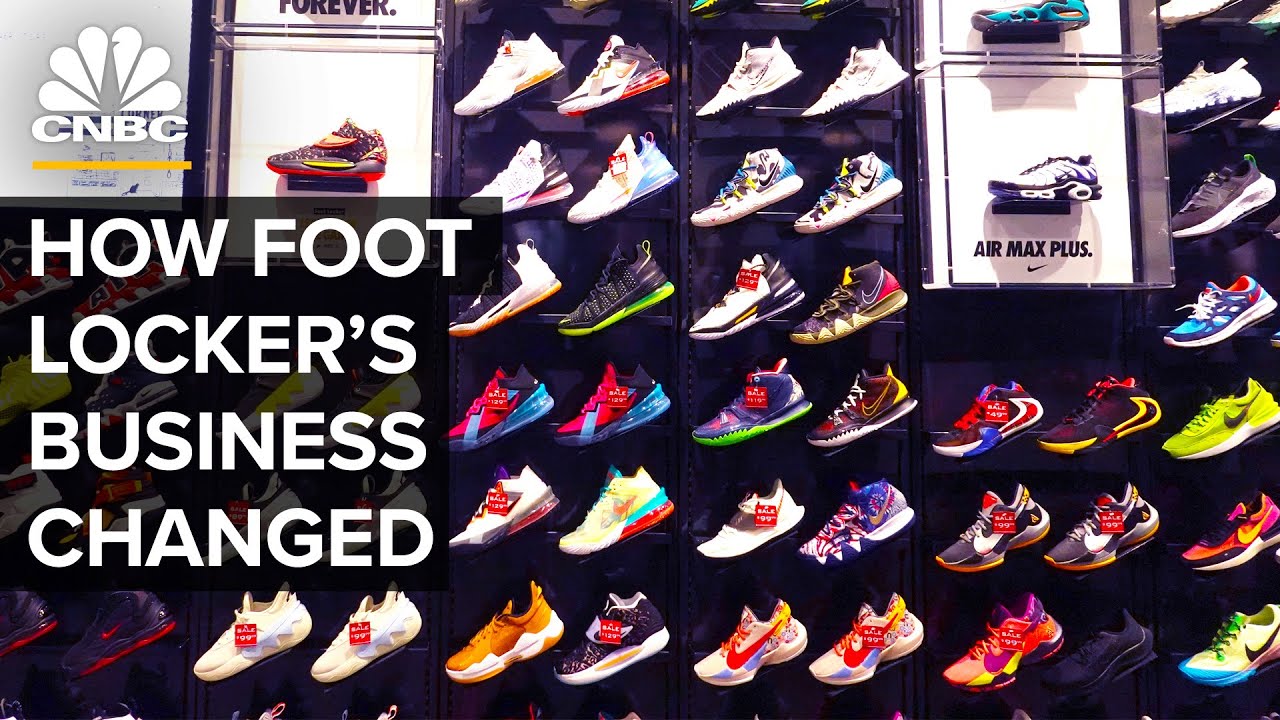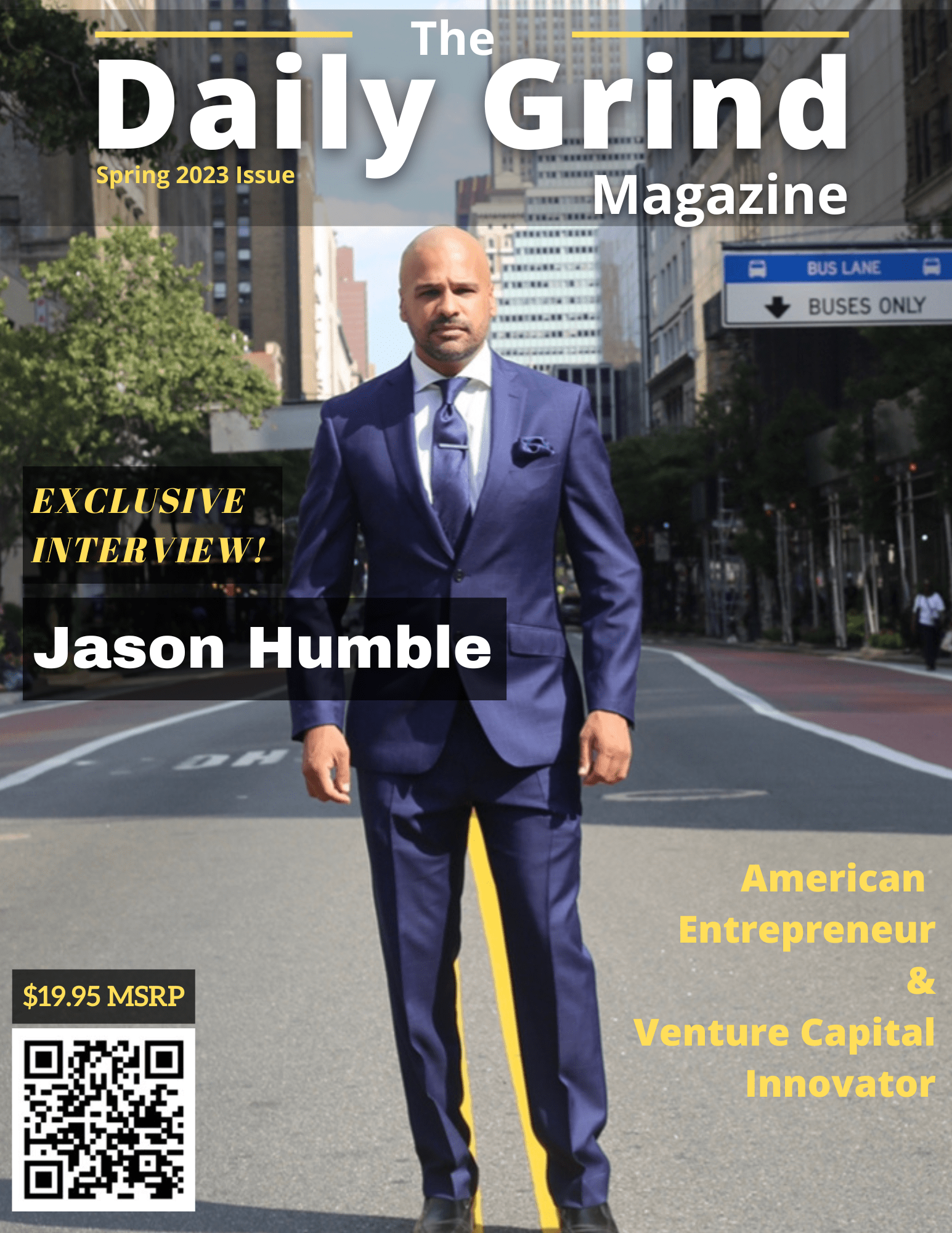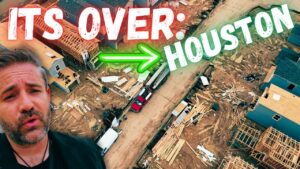There are few stores in the retail world that consistently
draw huge crowds, but one of them is Foot Locker. From the newest Jordans and Adidas Yeezy's to the more
recently coveted New Balance's and Crocs, Sneakers saw an unprecedented growth in 2020 and beyond. Sneakers are a massive global industry set to jump over the
$100 billion mark In a few years. Foot Locker is a mall staple, where the staff are dressed
like referees and shoppers line up for the latest sneaker Releases from Nike, Adidas and New Balance. It also sells a variety of athletic apparel, everything
from track pants and hoodies to basketball Jerseys. In the fourth quarter of 2021, Foot Locker had
sales of $2.3 Billion, almost 7% higher than a year earlier. "Retail is a game that starts new every day, right? So you have to win a customer every day. You have to win that relationship back and make sure that
you're the first place that they want to go and shop. So our visual merchandizing, our digital merchandizing, our
merchandise selection and assortments, you know, the Creation of our private label brands. Those are all things that we're working on, working really
hard on, but we have to continue to Evolve." The e-commerce side has seen strong growth as
well. In 2021, Foot Locker digital sales reached over $2 billion,
representing 28% of The company's total sales. However, the sneaker chain is facing mounting headwinds,
not only from other brick-and-mortar sporting goods stores, But also from leading athletic brands like Nike, who are
expanding their direct-to-consumer platforms. In February 2022, Foot Locker's stock plummeted almost 30%
after it announced it was cutting Back on its purchase of Nike goods and diversifying its
offerings. The company said by the fourth quarter of 2022, it hopes
not to have a single vendor represent more than 55% of its total supplier spend. In fiscal year 2020, about 75% of all merchandise purchased
at Foot Locker came from Nike. The company is also reinvigorating its
brick-and-mortar operations by making moves out of the Mall, rolling out about 300 power stores over the next
three years, with the hope of reaching customers where they Live. Power stores are typically four times the size of its
standard mall-based stores. With the digital world's rapid growth and many
brick-and-mortar businesses struggling to stay afloat, the Question remains: Can Foot Locker survive the digital age
of Sneakers? Foot Locker got its start in a Southern California mall in
1974, but its legacy goes back even Further. The sneaker store began as a segment of Kinney
shoes, which had more than 300 shoe stores in the
U.S. Kinney's was in turn owned by discount retailer
Woolworth's. At the same time, athletic shoes were beginning to become
more popular in the fashion world, with jogging and Racquetball being among the most popular sports. In 1977, Vogue pinned "real runner's sneakers" as status
symbols, worn by the likes of Farrah Fawcett and Mick Jagger at the time. "Foot Locker started out as a division of what we would call
in the industry a 'brown shoe company,' people that were Making dress and casual shoes as opposed to athletic shoes. Tennis was the sexy sport in the seventies, and the-the
original management of Foot Locker had this Vision that there would be generations of kids who would
want to wear nothing but athletic footwear. And so they started out with this chain with exactly that
idea, and it was wildly Successful." Basketball was another sport that helped fuel
sneakers as a cultural phenomenon, Rather than a simple commodity. Sports stars, famous musicians and celebrities all wore
sneakers through the sixties and seventies, giving them a Refreshed, more fashionable image. Nike, Adidas and Reebok all arrived on the scene from the
sixties to the eighties and invigorated Athletic fashion culture. In 1982, the First Lady Foot Locker opened, with Kids Foot
Locker following five years later. By then, Foot Locker had fully established itself as a
go-to athletic store, with the tagline "America's Most Complete Athletic Footwear Store," carrying some of the
most popular brands: Adidas, Nike, New Balance and others. Foot Locker's position at the time was key, as many sports
stars were signing deals for signature sneakers, and in 1985, the first ever Air Jordan 1's in the beloved "Bred"
and "Chicago" colorways were Released, prompting some of sneaker culture's first iconic
moments. The company was branching out, too, acquiring sports
retailer Champ Sports in 1987 and Eastbay a decade later, a brand that holds special
nostalgia for many sneakerheads in the late 1990s And early 2000s and helped bring cultural relevance to the
Foot Locker name. In 1997, with the coalescence of Eastbay's e-commerce
presence, the company also launched FootLocker.com. "Well, I think our ultimate role is- our current purpose
statement to inspire and empower youth culture. We were founded back in 1974 and Puente Hills, California. We've expanded globally. We've gone from a mall-based retailer to more power stores,
community stores, like we're sitting here in the Heights in. And it really is all that time has been about
serving the youth Consumer. Right?
Those- the youth is the future of the world. And we allow them to use sneakers and apparel and hoodies
for their own Self-expression. And I really you know, we've really found
a voice around that in the last few years. But even going back to 1974, that's what we were doing." Now the footwear space is continually expanding. In 2021, the total global sneakers market was valued at
approximately $79 billion And is expected to reach a value of $120 billion by 2026. Today. Foot Locker's footprint in the brick-and-mortar
space spans across 2,900 stores worldwide. It diversifies its offerings through several store formats,
which cater to different demographics. Its mainstay stores and Champ Sports are its primary
brands, with the highest store count across Foot Locker's Portfolio, which target male shoppers. Lady Foot Locker, Six:02 and Kids Foot Locker are its other
brands. And in 2013, it acquired Runner's Point Group, a specialty
athletic store based in Germany. More recently, Foot Locker has enhanced its physical
presence with its power stores, bigger, more innovative Retail spaces than a standard mall-based store. CNBC visited its Washington Heights location in New York
City, which features two floors, exclusive Product lines from local designers and dedicated lounge
spaces for customers to hang out. "They love the experiences in our stores, you know. They love our stripers here at Foot Locker. They love our team in blue at Champs. They love the steppers over at Sidestep in AMEA, and they
see them as their local experts around Sneakers, around cultural events, cultural things in the
neighborhood. And it really has helped us make this pivot from being
mostly a mall-based retailer To now having community and power stores that are deeply
connected to the communities that we live and work In." Foot Locker's ongoing relationship with some of the most
sought-after brands also allows it to reach a variety of Customers. Nike, Adidas and New Balance, all iconic
sportswear brands with poignant influence In the athletic fashion world, are part of its product
lineup. With its beginnings and primary strengths in brick-and-mortar, it poses questions towards Foot Locker's Future, as brick-and-mortar has presented challenges for
multiple companies over the last several years. Sports Authority and Modell's are two notable bankruptcies
that have occurred in the athletic retail industry in Recent memory. Overall, Foot Locker has enjoyed a lasting presence, but it
has, of course, had some Setbacks.
"And certainly during the pandemic, we saw malls get in
trouble. We saw people not able to enter stores. I remember on March 17th of 2020, we closed 3,500 stores
around the Globe. Right? And that's a scary thing, you know, to suddenly say 75, 85%
of our business At that point was coming through brick-and-mortar stores,
and we suddenly had to close those stores. But what we found through the pandemic is the consumer has
picked up some new habits, so more consumers bought Online. But when our stores were able to open, they came
back in waves, right? They came back really strong. And they love the experiences in our stores." Despite the setbacks in 2020, Foot Locker successfully
bounced back in the following year, "Foot Locker reported strong sales coming out of the Covid
pandemic as stores reopened. There was a lot of stimulus in the market, and we think
they did gain some wallet Share. Those results weakened significantly into the fourth
quarter of 2021 and into the first quarter of 2022. That gives us some concern. We see a lower-income consumer that's facing enormous
headwinds from inflation and just general Macro uncertainty. And I think that in general, that's
going to affect Foot Locker pretty deeply in 2022. 2021 was not without its challenges either, however. In May, it began to wind down its Footaction brand of
stores. "We do think the company has far too many mall-based stores
in the U.S., 80% of which are in malls. The company's limiting its Nike and Air Jordan purchases to
no more than 55% of its store Inventory. So that's down from 75% in fiscal '20. There's a big change in strategic direction here. It's tough to call a bottom, we think, in the company's
traffic and same-store sales Results. More than those difficulties, Foot Locker also faces stiff
competition from other brick-and-mortar athletic stores, Such as Dick's Sporting Goods and JD Sports, which owns
mall-based retailer Finish Line. Beyond its domestic endeavors, Foot Locker is also looking
to expand its international presence. In August 2021, it acquired two shoe retailers, WSS and
Atmos, for $1.1 Billion. "We really see the Asian markets as ones where streetwear
and culture, sneaker Culture sort of emanates from.
And we were able to, during the pandemic, actually acquire
a great company, a great brand in Japan called Atmos, which really focuses on the highest
heat product. Hommyo San, the founder, he really has a great connection
to street culture And Japanese culture and really creates some great heat
products that we believe we'll be able to take Globally. 2015 was a massive year for sneakers. Adidas, Yeezy Jordan and Under Armour were releasing some
of their most successful silhouettes. So much was already going on in the sneaker landscape. And still more was to come: that same year and the next,
two of the major players in the digital space Made their debut on the scene. StockX and GOAT. Widely regarded as two of the most rapidly-grown sneaker and
streetwear reselling platforms, these Companies created an online marketplace for sneaker
resellers and streetwear enthusiasts alike. "Where we started was a belief that we could build a better
marketplace model — Better for both buyers and sellers — by bringing trust, by
bringing pricing visibility, Authenticity and frankly, bringing access to products that
were not always Easy to get into your- into your hands. And our approach to doing this, our thesis was that we
could leverage stock market mechanics to Solve for a lot of the challenges that we saw in incumbent
marketplaces." Consumers could now buy and sell their sneakers in one place
online, changing the sneaker game indefinitely. "We've helped to grow the market by making it more
accessible to more people. So for sellers, we're helping sellers globally unlock
economic opportunity. No matter where that seller is located, we're providing
them access to a global audience and we're making it Seamless. On the buy side, you don't have to worry about, '
Am I getting something that is a fake product? Am I getting something that is used or in a damaged box?' To add on to the already rapidly-changing landscape, Nike
launched its now popular SNKRS app, which offers a Specific platform for Nike's most sought-after releases,
marketed largely to sneakerheads. Foot Locker's e-commerce presence on its flagship site,
FootLocker.com, as well as its online-only brand, Eastbay, allows it to continue to share a piece of the pie
on the digital side. With StockX and GOAT growing into key players, Foot Locker
invested $100 million in GOAT Group in February 2019, which proved useful to its
business, as the growth of sneaker E-commerce in the following year, during the pandemic, was
explosive. "One of the interesting things that happened during the
pandemic was a real surge in purchasing sneakers online. In 2019, we sold about 30% of the sneakers in the U.S.
Were purchased through e-commerce and in '20 that surged to
40%. We gave back a little bit in '21, and my expectation is we
go back to growth again, but we leapt Probably 3 to 5 years in terms of the penetration of
e-commerce in essentially 3 to 5 months. Foot Locker was a big part of that. They have a very, very well developed e-commerce platform. They know who their best customers are and talk to them
frequently, involve them in product. They are now using their loyalty program to help the
sneaker enthusiast, the sneakerhead, Get to more exclusive product more easily." Some attribute the sudden increased interest in sneaker
culture to the premiere of "The Last Dance," an ESPN Docuseries detailing Michael Jordan's laudable career,
along with the sneakers he wore during his most iconic Games. Following the premiere, secondary marketplaces like
StockX saw record-breaking Numbers in Jordan sales, and similarly, Foot Locker's stock
price increased from $22.05 on March 31, 2020 to $34.12 in June 2020, and continue to steadily rise to a high of $63.98 in
June 2021. The $6 billion resale market has also catalyzed into
physical stores, almost Solely dedicated to that secondary market, Flight club and
Stadium goods are those newer players, Impressive manifestations of the resale market's brick-and-mortar sustainability. In 2018, GOAT group merged with Flight Club, further
weaving together the markets channels. However, the reselling phenomenon has wrought havoc across
many more industries due to the pandemic. The appeal of profitability and rise in online shopping
prompted an increased use of bot technology. Bots allow a user to buy a product, often a popular one, in
a matter of milliseconds, rather than Manually adding to cart and checking out. Similar to the recent outrage towards console bots, some of
the most anticipated sneaker releases in the past Several years have sold out almost instantly due to bots,
resulting in vocally frustrated consumers. But unique to the sneaker industry, its participants on
both the consumer and retailer sides have had ongoing Issues with bots as early as 2013. "The bots are a real problem, and the industry is working on
several different initiatives, I guess I should say. One of the things that seems to be working is to use
invitations to your best customers. So instead of opening up the doors and letting anybody come
in, they're literally going out and saying, 'Okay, this Customer bought X number of pairs of shoes last year. Let's send them a personalized invitation with a limited
window of their ability to come in and Buy.' One of the big problems for both footwear for
retailers and brands in this space is That the server simply can't handle the traffic on- on a
major launch date. One of the ways to combat that is to spread that- that out
over a longer period of time.
And I think the invitation model may get us there." Foot Locker is not alone in facing dissatisfaction from
customers for products selling out in an instant. The problem is industry-wide, and no company has managed to
defeat the bots entirely. Even with anti-bot measures, some are so advanced that they
can bypass the safeguards. "It's an ongoing battle, right? Honestly, the bots are fast. We have to be faster. We've introduced a launch reservation system, and our goal
is ultimately to get more of the product In the end users hands. So we've worked hard to create a more equitable launch
reservation process. We've rolled out our FLX program, which is one of the ways
that you can get a little bit of a head start on your launch Reservations and on launch day. And we really are trying to create a marketplace of
fairness." Despite rapid changes in digital retail and the uniquely
chaotic sneaker world, it is safe to say that Foot Locker's Name is still relevant, and maintaining that relevancy is
made easier from the fact that it simply has access to the Most anticipated sneaker releases. "Nike's e-commerce business will likely grow globally from
$11 billion in sales to $32 billion in Sales. Their wholesale channel, which Foot Locker is
represented in, is not likely to grow over the next five Years. And that's just Nike limiting the amount of product
that goes into that wholesale channel. Foot Locker has too many doors; Nike cannot service all the
doors properly. Foot Locker has to be able to shift its business to newer
vendors, such As On Running, HOKA, Vans, Puma, Under Armour. It's a riskier strategy than what they've relied on in the
past." Foot Locker's newest challenge, however, is Nike's decision
to pull some of its products from the brand in an effort to Focus on direct-to-consumer sales in its own stores. In March 2022, Foot Locker shares crashed shortly after the
announcement, and it quickly Lost $950 million in market share. "We downgraded Foot Locker to market perform back in March
and really Reflected in down data that we were looking at in terms of
both website traffic, Google search data And just overall traffic in the mall. Foot Locker stock declined 30% the day it announced the
reduction in inventory purchases. It also issued sales and earnings guidance that was far
below consensus expectations. The stock's valued at very cheap cash flow multiples and
earnings multiples. There's just so much uncertainty that investors are looking
at that it's difficult to value the business right
Now." "Well, we have a great, multi-decade relationship with Nike,
and we continue to evolve that relationship. Clearly, some allocations have changed, but the truth is,
we're on a journey. We've been on this journey to diversify our product
offering, and we listen very closely to our consumers, both Digitally and physically in store. If you look at the numbers from our fourth quarter, we had
started this journey to have less Nike product in the- In our stores based on customers' demand. We end up having a great relationship with Nike, utilizing
their great products, Their storytelling, but adding that to the other great
brands that service this industry, and we end up being Strong partners to them all." In spite of being part of an industry that is always
changing, for now, Foot Locker intends to stay. "We've announced that we're going to have 300
community-based stores by the end of 2024. If we can help them grow, we just keep fueling the
community that we live and work in. We're going to continue to drive high heat in storytelling,
both digitally and physically, through physical Spaces, but more importantly, through our digital
storytelling, in our connectivity with the consumer."






